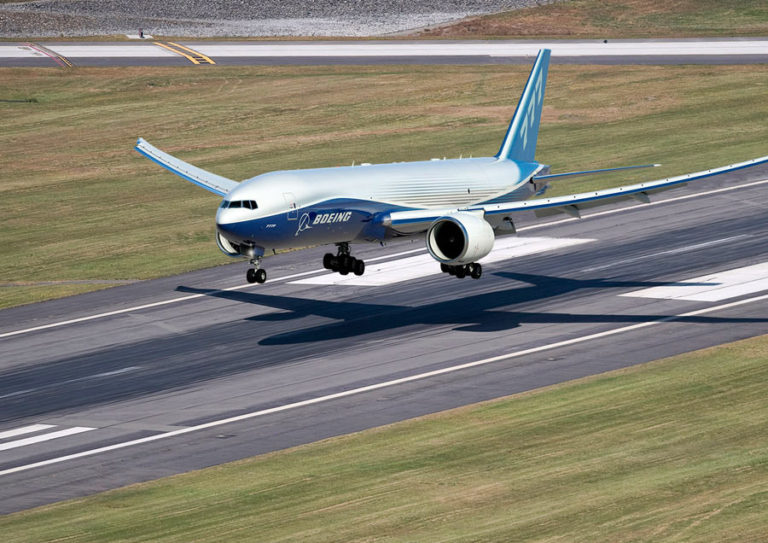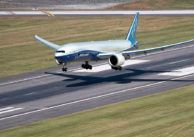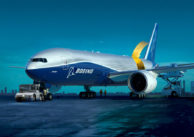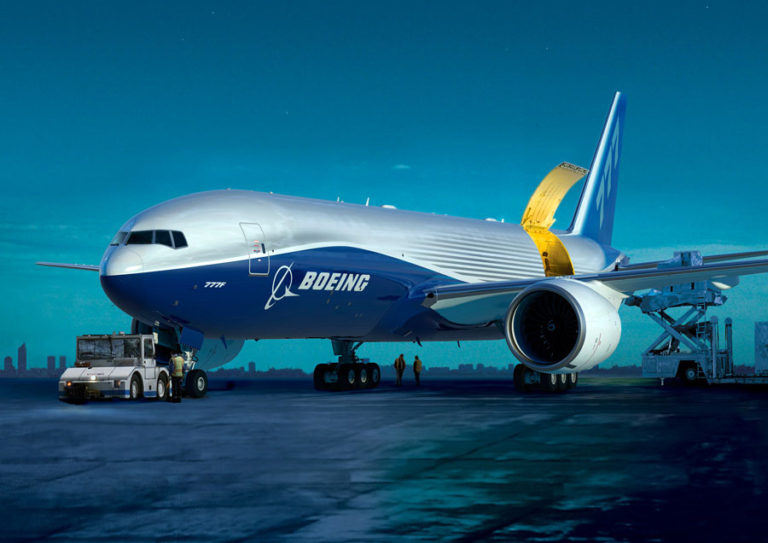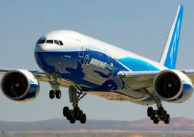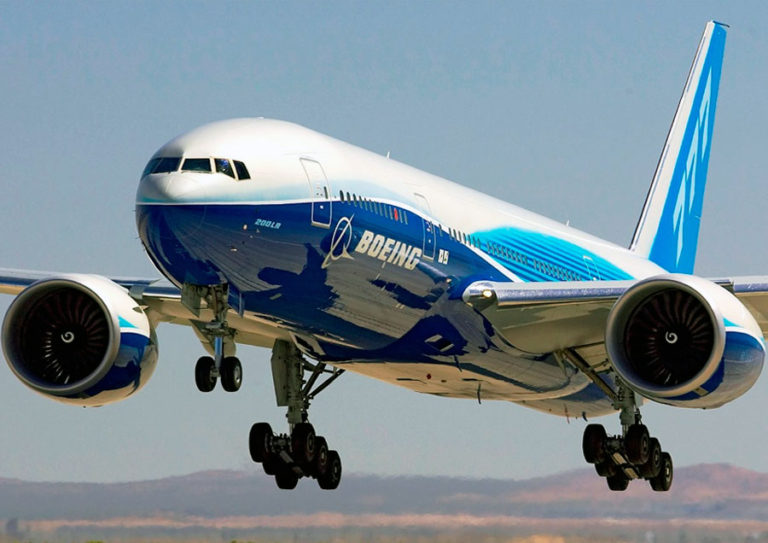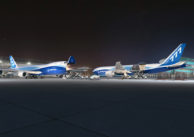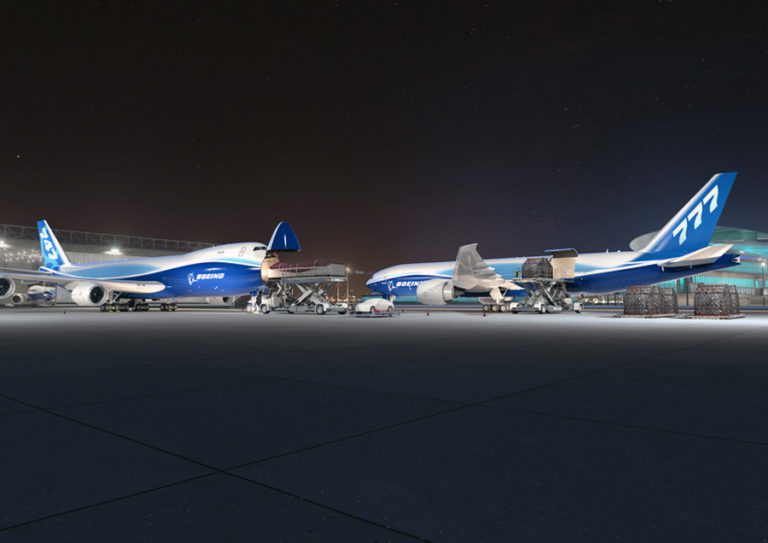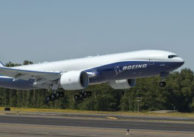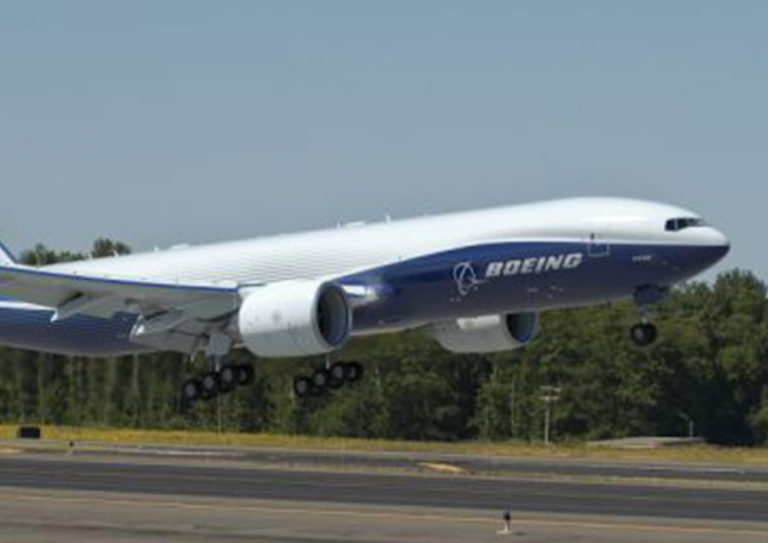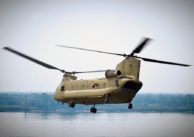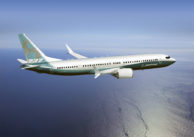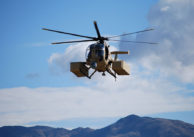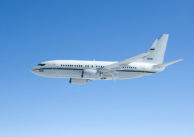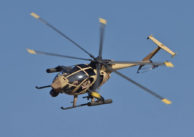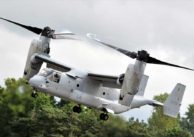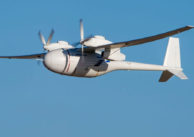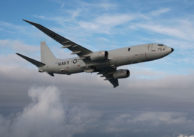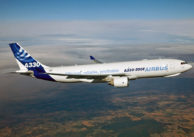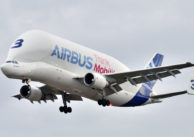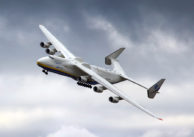Back
Unrivaled performance and reliability in the large-freighter market
The freighter fleet mix is shifting decisively toward large airplanes. Large production freighters are projected to capture 65 percent share of the new production freighter fleet as long-term demand for air cargo services rieses over the next 20 years. In the large-freighter category, where reliability and aircraft capability bring particular advantage, operators strongly favor purpose-built freighters. The 777 Freighter delivers twin-engine economics and the unrivalled reliability and capability of the 777 passenger airplane to the large-freighter market.
Range and capacity for the world's growing air cargo markets
With intercontinental markets strong and growing, the twin-engin Boeing 777 Freighter has the range and capacity to make nonstop service efficient and economical. With payload capability comparable to that of three- and four-engine freighters, the 777 enables operators to match available capacity precisely to market growth and variable demand.
Designed for low operating costs and maximum productivity
A testament to the power of digital design, the 777 Freighter benefits from the same integrated onboard systems, advanced materials, aerodynamics, and powerful engines as the most recent 777 passenger airplanes. The state-of-the-art cargo-handling system features compact rollers and reliable power drive units that air cargo carriers favor. This system gives operators unsurpassed flexibility to optimize loads for the maximum advantage of 777 Freighter volume, lift, and range.
Efficient structure, materials, and systems
Structural efficiency keeps the 777 Freighter empty weight to a minimum, for exceptional fuel economy, low noise, quick climb to cruise, and maximum revenue payload capability. The advanced wing features a system that automatically redistributes aerodynamic load on the wing, should maneuvers that produce high wing loads be required. This maneuver load-alleviation system allowed engineers to design a wing that is exceptionally light for its load-bearing capability. Advanced materials used strategically throughout the airplane help make the structure durable, efficient, and easy to maintain. System markets and the efficiency to serve both long- and short-haul markets economically.
Boeing 777 Freighter
Unrivaled performance and reliability in the large-freighter market
The freighter fleet mix is shifting decisively toward large airplanes. Large production freighters are projected to capture 65 percent share of the new production freighter fleet as long-term demand for air cargo services rieses over the next 20 years. In the large-freighter category, where reliability and aircraft capability bring particular advantage, operators strongly favor purpose-built freighters. The 777 Freighter delivers twin-engine economics and the unrivalled reliability and capability of the 777 passenger airplane to the large-freighter market.
Range and capacity for the world's growing air cargo markets
With intercontinental markets strong and growing, the twin-engin Boeing 777 Freighter has the range and capacity to make nonstop service efficient and economical. With payload capability comparable to that of three- and four-engine freighters, the 777 enables operators to match available capacity precisely to market growth and variable demand.
Designed for low operating costs and maximum productivity
A testament to the power of digital design, the 777 Freighter benefits from the same integrated onboard systems, advanced materials, aerodynamics, and powerful engines as the most recent 777 passenger airplanes. The state-of-the-art cargo-handling system features compact rollers and reliable power drive units that air cargo carriers favor. This system gives operators unsurpassed flexibility to optimize loads for the maximum advantage of 777 Freighter volume, lift, and range.
Efficient structure, materials, and systems
Structural efficiency keeps the 777 Freighter empty weight to a minimum, for exceptional fuel economy, low noise, quick climb to cruise, and maximum revenue payload capability. The advanced wing features a system that automatically redistributes aerodynamic load on the wing, should maneuvers that produce high wing loads be required. This maneuver load-alleviation system allowed engineers to design a wing that is exceptionally light for its load-bearing capability. Advanced materials used strategically throughout the airplane help make the structure durable, efficient, and easy to maintain. System markets and the efficiency to serve both long- and short-haul markets economically.



